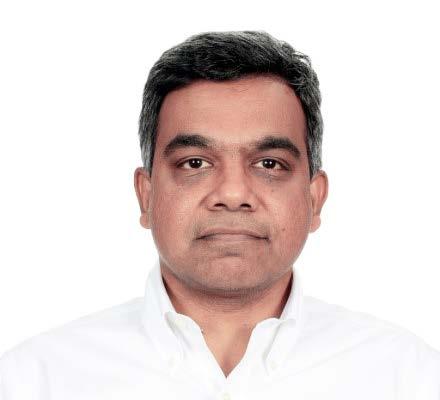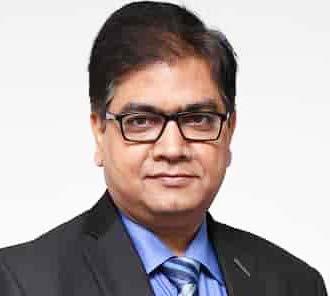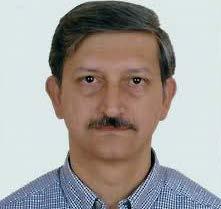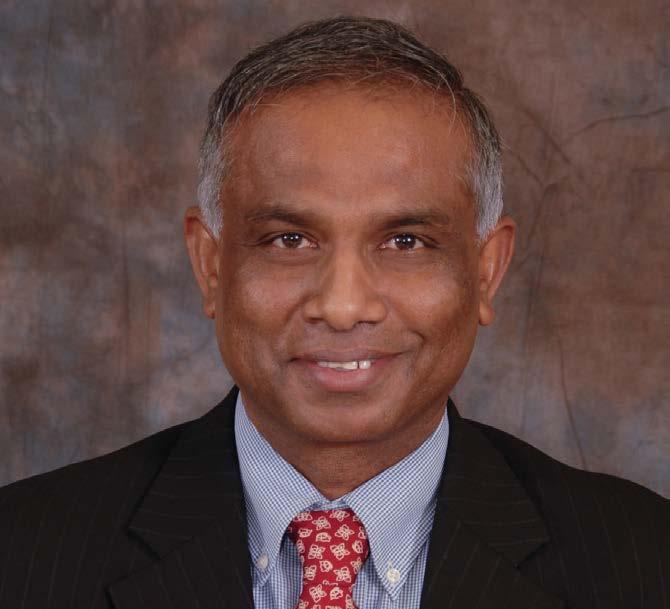
12 minute read
World Energy Storage Day review
by ETNews
World Energy Storage Day brings stakeholders on single platform
Commemorating the 4th World Energy Storage Day 2020, IESA on September 22, held marathon, all day-long sessions deliberating on the future of energy storage, and called upon all stakeholders in India and globally, to strive to build an enabling ecosystem.
Advertisement
On the occasion of WESD 2020, IESA brought together industry leaders, policymakers, academia, researchers, and energy storage professionals from India and across the world on a single platform by organizing the first-ever, virtual World Energy Storage Day Global Conference and Expo.
Over 2,500+ delegates and 10,000+ participants from 60+ countries engaged in insightful discussions at the conference, deliberating on policy and government initiatives for stationary energy storage, e-mobility, innovations, and latest developments in these sectors worldwide.
Prime Minister Narendra Modi, in his letter to IESA said, “I am pleased to learn that IESA and its partners are holding a digital World Energy Storage Day Conclave and Expo. Energy security and sufficiency are pivotal for selfreliant India. We are constantly striving to ensure that electricity reaches everyone, there is sufficient electricity for everyone, and that our environment remains clean. We are also making sure that our resolve towards clean and renewable energy is taken care of in every aspect of life. For energy access and energy sustainability, we are focused towards building a robust storage capability in the country. Efforts like global conclave and expo strengthen this vision. The presence of policy makers, technical experts and other participants from various countries reflects mankind’s commitment to sustainable development.”
M. STANLEY WHITTINGHAM
M. Stanley Whittingham, 2019 Nobel Laureate in Chemistry, during his keynote address at the event said: “Lithium-ion batteries are already changing the way we store our future energy. The future is bright for storage and Li-ion batteries are raring to go. Clearly, the battery is not only the medium, hydrogen, pumped hydro and supercapacitors will also be some active contenders for future energy storage requirements. Let’s make 2020 the decade of energy storage.”
Speaking at the virtual conference, Dr. Rahul Walawalkar, Founder and President of IESA, said, ‘“The world is at the cusp of a 21st century industrial revolution. Energy storage will be at the epicentre of this revolution. The discussions and insights here have set the tone for many strategic interventions across the world towards building a global ecosystem for energy storage in the power and transportation sector. The event emerged as catalyst towards highlighting the potential of energy storage for future businesses and sustainable living.”

Following are key ideas and insights shared during the global conference.
POLICY AND GOVERNMENT INITIATIVES
Present at this session were various government bodies as well as policy and research organizations, who came together to deliberate on present state of initiatives and policy framework, the barriers to energy storage adoption and the opportunities within the sector. The speakers deliberated on the changes that will shape the future policy initiatives.
GHANSHYAM PRASAD Jt. Secretary Ministry of Power (MoP)


AMITABH KANT CEO NITI Aayog
“Battery storage is the undisputable leader in the overall energy storage portfolio. Potential demand for advanced battery storage application is expected to reach 230 GW on YoY basis in India by 2030, while the cumulative domestic market demand is estimated to reach 1,116 GWh. The government shall soon launch incentive to attract global companies through a transparent competitive process to set up mega manufacturing plants in the sunrise and advanced technology areas such as the solar PV and advanced battery storage in India.” “Any disruption that takes place in the electricity sector is an opportunity to grow. In terms of advantages of batteries, as MoP, we look at it as grid element ensuring electricity to each household without any interruptions.”

DR. RAHUL WALAWALKAR Founder-President – IESA; MD-Customized Energy Solutions, India
“India presents a significant opportunity of stationary energy storage technologies. In next five years, we are entering into an unprecedented era, where thermal plants will have to pay down 30 percent, which is not an ideal situation. At the same time, we do expect that the market for EVs is set to pick up beyond 2022-24.” DAVID MORGADO Sr Energy Policy Specialist - Asian Infrastructure Investment Bank (AIIB)

“Asian governments can create the enabling environment for energy storage by removing barriers and creating a level playing field, revised market designing and enabling new business models, setting goals of adoption for state-utility, supporting implementation of pilot projects and supporting R&D in battery storage.”
STATIONARY ENERGY STORAGE
This objective of this session was to discuss the stationary energy storage market in India. The esteemed panel also reflected upon the role of policies, technology innovation as well as economics and challenges for such projects.

STEPHEN FERNANDS President Customized Energy Solution
“At present regulation of frequency is the main driver for growth of BESS but in the future drivers will include decreasing cost, grid-based renewables, distributed renewables, EVs, national and local policy and new technologies and value stacking.” PRAVEER SINHA MD & CEO Tata Power Company

“We do have a huge plan for tying up large grid-connected storage solutions. We believe that virtual power plants will play an important role in managing the frequency. The meters have helped us understand the harmonics, and investigate taking care of energy storage applications.”

RAJENDRA SHRIVASTAV President and Market Business Leader AES India
“On the policy points, we believe that energy storage future lies in the government recognition for the same. With respect to C&I, the need is to encourage pure energy storage assets.” DR. Y.B.K REDDY General Manager-Solar Solar Energy Corporation of India (SECI)
“Studies indicate the targets will exceed from the one that we have set for 2022. The target of 330 GW of solar is above the present load. In future, the plan is 40-80 percent PLF on the grid. The peak power generation guarantees supply all the time. The round-the-clock power generation is also one of the solutions considered.”

DR. IMRE GYUK Director (Energy Storage Research) - Office of Electricity, US Department of Energy (DoE)
“In the USA, 30 States have renewable energy generation goals, which will necessitate long duration storage. The important thing is the business case, this requires fundamental restructuring of regulatory structure and policy framework.”

EMANUELE TAIBI Power Sector Transformation Strategies, IRENA
“System flexibility is key to achieve the goals of the energy transition. Solar and wind sources can contribute to around 80 percent of power generation by 2050. Here, energy storage has an important role to play.” CHANDRASEKAR GOVINDARAJALU Lead Energy Specialist The Climate Finance The World Bank

“At the World Bank, we are interested in energy storage technology because we want to increase energy access around the world, but this won’t be possible unless good storage solutions are integrated.”

SZILVIA DOCZI Economics Lead - System Integration of Renewables, International Energy Agency (IEA)
“In the sustainable development path energy efficiency, renewables, and new technologies play an important role, and alongside there is storage deployment. Nearly 70 percent of all renewables will come from mainly six markets of the world: China, Europe, United States, Brazil, India, and Japan. In India and China additional renewable generation will come from solar PV and winds.” DR. JUDY JEEVARAJAN Research Director - Electrochemical Safety, Underwriters Lab Inc.

“Safety of large megawatt hours and gigawatt hours of battery energy storage system is paramount. Going forward we will develop more research projects to look at areas and gaps that have not been studied. With more installations, it will help us look into how to make it [energy storage] safer.” E-MOBILITY
This session discussed the transition underway in the transportation sector globally. Today we witness, global automotive industry is on the edge of disruption. Four technology-driven trends — electrification, shared mobility, connectivity, and autonomous driving—are leading the automotive industry to this disruption. The next wave of EV penetration will be contingent on recognizing the right segments and applications, designing the right product, and modeling the appropriate business model and value proposition.

SRINIVASA VENU UPPULURI Vice President SB Energy
“In APAC, Korea has announced EV incentive until 2025, China extended EV scheme up until 2022; further, governments are encouraging industries in EV manufacturing. Recently, the Indian government announced selling EVs without battery so there is tremendous growth potential in the EV sector.
“Vehicle-to-Grid (V2G) segment, globally 67 pilot projects are at various stages of development, EU is leading in terms of V2G deployment (Denmark, UK) and Japan as well, we need to see more learnings in this direction”, he further added.”

SAURABH KUMAR Executive Vice Chairman EESL Group VIJAYANAND SAMUDRALA CEO Amara Raja Batteries

“What we have observed is that if you do provide a good network of charging stations to people, they do use electric vehicles.”

PRIYANK AGARWAL VP & Head of Business Development & Strategy Exicom
“Battery second-life will become a reality. We have to look at designing batteries that are second-life ready. This is something battery companies and OEMs have to start thinking on priority.” “You got to develop domestic manufacturing to address the need of various dynamics of electrification of mobility. Demand aggregation, scaling it up to 30-50 kWh is, in my view, the phase-I of how we can grow.”
VIKRAM GULATI Country Head Toyota Kirloskar Motor
“What is missing is the aggregation of xEVs demand. In the journey ahead the focus should be on trying to make mass electrification, not just niche electrification.” ANSHUL GUPTA Director, Okaya Power Group

“The Indian EV sector has grown exponentially but contributes only one percent to the total vehicles sales at present. The States of Punjab, Delhi, Maharashtra, Karnataka, Telangana, Andhra Pradesh, Uttar Pradesh, Madhya Pradesh have majorly shifted policies and provided all the subsidies to consumers to make the shift possible and we are also witnessing rise in sales on account of this, but other States lag behind.”

AWADHESH JHA Vice President – Charge & Drive and Sustainability Fortum Charge & Drive
“The electric vehicles plans globally are going to stay as they were, and no major changes can be expected. We, at Fortum, have witnessed the growth of technology from 50 kW at rapid scale. In Oslo, we are conducting a pilot wireless charging. This expertise is now brought into the market.”
INNOVATION
In this session, speakers deliberate on innovations. Innovation is progressively recognized as a core part of energy policy. A swift rise in battery innovation is playing a key role in clean energy transitions. Innovative approaches to financing and business models are also democratizing the benefits of batteries.

DR. SANJAY BAJPAI Head (Technology Mission Division: Energy Water & All Others) - Department of Science & Technology
“Today, innovation has become the buzzword and has taken center-stage. With current policy consultation, innovation will become a central part of science and technology. The departments of government have innovation opportunities in both formal and informal sectors.” NAVEEN SHARMA Vice President Exicom Tele-systems

“The key drivers for the energy storage systems market are renewable integration, distribution utility, falling price of Li-ion battery and diesel optimization, which will take the stationary market further. There is a decent energy storage requirement of 20 GWh that will make for attractive market opportunities.”

SANDEEP TANDON National Programme Manager - FLCTD, UNIDO
“UNIDO is helping governments with a roadmap to meeting SDGs. We have five-year plans in India depending upon the source of funding. The goal is to bring together all the stakeholders and discuss a way to demonstrate and innovate the technology aimed at strengthening the cleantech ecosystem.” ERIC HSIEH Grid Components and Systems Office of Electricity, Advanced Grid R&D, DoE

“Our vision to have secure domestic manufacturing in the supply chain and be a world leader in energy storage utilization and we want to do this by coordinating and focusing on resources from across the U.S. Department of Energy (DoE) to create a comprehensive program to accelerate the development and commercialization of next-generation energy storage technology.”

SIDHARTH CHOUDHARY AVP and Lead Technology Management-AGNIi, Invest India
“Science technology is more interlinked with innovation. The movement towards disruptive energy storage technology to come into the mainstream has started. We are very well placed to understand the importance of this sector and it is one the growth sectors to watch for.”

PROF. ARUMUGAM MANTHIRAM University of Texas, Austin
“We are working on cobalt-free battery without compromising energy density, safety, and performance. My group is also working on sulfur. The dream technology is sodium-sulfur, if we can make that happen then sustainability, availability and cost will never be an issue.” ENERGY ACCESS
In this session the speakers discussed about energy access, significance of microgrids and minigrids and the use of storage therein. India has, in just over a decade, accomplished extraordinary success in extending electricity access through its national program. About 1,25,000 villages have been electrified and 500 million people have got access to electricity, but a lot of more effort is required as renewables get added to India’s energy mix.

NATHAN ADAMS Director of Technology and Business Development Hitachi ABB Power Grids DAVIDE COPPOLA Downstream Business Applications Department European Space Agency (ESA)
“Typically, when it comes to renewable energy one of the key aspects is understanding of space data. Space data can help us understand not only commercial viability for future installations but also the environmental impact of the project. Through various initiatives, ESA continues to leverage space data to look into efficient ways for rural electrification and rural community upliftment.”
“Storage plays a critical role in keeping small grids up and running along with our (Hitachi ABB Power Grids) control system, which integrates the generation and keeps these grids running 24x7.”
THANK YOU PARTNERS











